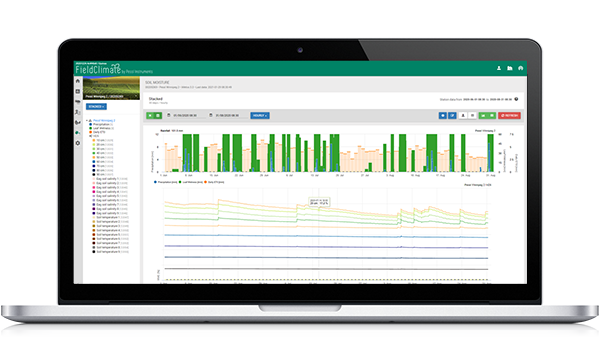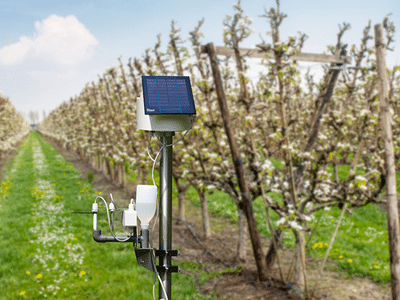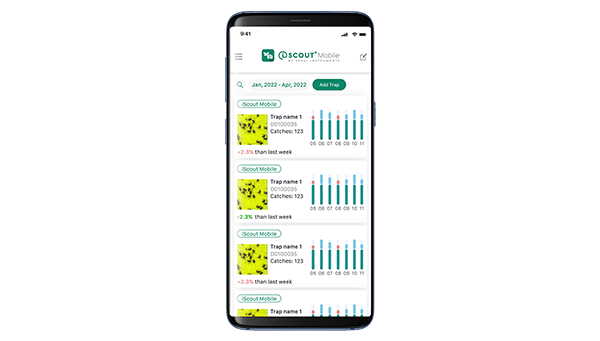

Blackberry disease models
Blackberry Ripe rot
The fungal pathogen Colletotrichum acutatum causes Blueberry Anthracnose (Ripe Rot) on pre and post harvest fruit of highbush blueberry. The disease occurrs in all blueberry production areas and has a great impact of reducing shelf life of fruits and having a poor quality of fresh fruits on the market.
Symptoms
Blueberries are susceptible to the fungal pathogen. The berries don`t develop symptoms until they are mature or ripe. The first symptoms are seen near the end of the blossom on ripe fruits as dark, sunken areas. This infected area may shrivel with time. Within a few days, bright salmon- orange-coloured, wet spore masses are seen on these sunken areas. The sticky spore masses spread to other berries by rain, irrigation, splashing water, wind and contacts during harvest. The fungal pathogen infects all stages of the plant: leaves, buds, twigs and canes. New shoots and leaves may become blighted in the spring. Twigs are becoming infected by transferring spores from infected buds. Dark brown, canker-like lesions with fruit bodies develop on young canes.
Disease Cycle
The fungal pathogen overwinters in twigs and flower buds, spurs and trusses. In spring the fungus produces spores, which are dispersed by rain, irrigation and water splashes. Infections occur at a temperature optimum of 12- 27°C and a leaf wetness period of more than 12 hours. The fruit can be infected at any time, although infections are just visible (symptoms seen) when the fruit is mature. The fungus enters the fruit and remains dormant until the berry starts to ripen. At this time the fungus starts to colonize the infected area and produce enzymes with destroying the plant cell walls. These damaged cells lose their contents and integrity (symptoms are seen as sunken areas and shrivelled). Spent fruit trusses could be infected after harvest. In FieldClimate.com weak, moderate and severe Infections are calculated in dependence on the parameters temperature, leaf wetness and precipitation. Whenever 100 % of infections are reached the conditions for a weak/moderate or severe infection have been fulfilled.
Literature:
- Peres N.A., Timmer L.W., Adaskaveg J.E., Correll J.C. (2005): Lifestyles of Colletotrichum acutatum. Plant Disease, Vol.89 (8), 784-796.
- Wharton P.S., Dièguez-Uribeondo(2004): The biology of Colletotricum acutatum. Anales del Jardin Botanicode Madrid 61(1).
- Gillett J.M., Schilder A. C. (2009): Environmental Requirements for Infection of Blueberry Fruit by Colletotricum acutatum. Proc. IxthIS on Vaccinium.
Grey Mould
Botrytis cinerea is a necrotrophic fungus that affects many plant species, although its most notable hosts may be grapes.
In viticulture, it is commonly known as botrytis bunch rot; in horticulture, it is usually called grey mould or gray mold.
The fungus gives rise to two different kinds of infections on grapes. The first, grey rot, is the result of consistently wet or humid conditions, and typically results in the loss of the affected bunches. The second, noble rot, occurs when drier conditions follow wetter and can result in distinctive sweet dessert wines, such as Sauternes or the Aszú of Tokaj. The species name Botrytis cinerea is derived from the Latin for “grapes like ashes”; although poetic, the “grapes” refers to the bunching of the fungal spores on their conidiophores, and “ashes” just refers to the greyish colour of the spore masses. The fungus is usually referred to by its anamorph (asexual form) name, because the sexual phase is rarely observed. The teleomorph (sexual form) is an ascomycete, Botryotinia cinerea.
Biology of B. cinerea
In fruits and grapes flower infections followed by latency are having a big impact on the epidemiology of grey mould. Several flowers to fruit infection pathways can be separated. In grapes, kiwifruits, and raspberries infections through the stylus into the ovule have been postulated. In the ovules, the pathogen stays latent, which seems to be a result of a preformatted host defence strategy (similar to the resveratrol content of young grape berry). In grapes, kiwifruits and strawberries infections through the stamen, petals or septals have been found important. In grapes, studies showed that B. cinerea could infect the stamens and grows basipetal to infect the receptacle and then grows systemically to the pedicel and vascular tissues in the berries.
A 6-year research project in the Cape area showed that grape berries can be infected through the stoma and lenticells of the pedicel and at a lower extent of the racheis. Pedicel infections are possible during the flowering period too. Later this tissue increases resistance against B. cinerea infections.
Other infection pathways postulate the saprophytic growth of the pathogen on floral debris and the later infection of berries when the susceptibility increases with ripening or by insect or hail damage to the berries. The assumption of conidia accumulation within the fruit during summer and the infection of susceptible berries later in the season is another thesis. Condidial infection of ripening fruits is possible from any inoculum source. Most probably a low number of latently infected berries are formed, which show extensive sporulation when the susceptibility of the berries increases with maturity. With can assume berries become susceptible starting from a sugar content of 6%.
In kiwi fruit, we have a big impact on picking conditions to the occurrence of B. cinerea. Fruits picked with a wet surface can get infected by B. cinerea at the micro lessons set by the fingers of the pickers.
In practical control of B. cinerea we have to separate two important infection periods: Flowering and senescence. During flowering, we have susceptible young fruits, where the infection is followed by a latency period. While infection on matures (senescent) fruits will lead to symptoms without a latency period. The importance of the infection during flowering in grapes can change from season to season and between regions. In fruits where we have to expect some shelf life (table grapes, kiwis or strawberries) the symptoms are seen when stored under cooled conditions in shops or storage. Chemical control of vine grapes showing good resistance to B. cinerea during the flowering will not show any economic results. Therefore all conditions of risk and probability of infection, the susceptibility of the fruit and the shelf life, and storage conditions have to be taken into consideration in the decision of an application against Botrytis cinerea during flowering.
In stone fruits, infection by B. cinerea occurs mostly during flowering. At this time treatments against Monilina spp. are taken into consideration which also infects the Botrytis cinerea infection.
Model of B. cinerea and practical use
Sensors: Leaf Wetness, Temperature, relative Humidity
In FieldClimate.com we use the following correlation between leaf wetness duration and temperature to model the disease.
Botrytis cinerea is a facultative parasite. It grows on dead plant material too. Because of this fact it is always present in vineyards and orchards. Botrytis cinerea is related to moist climate. For infection, it needs very high relative humidity or the presence of free water (sensor: leaf wetness, relative humidity). The fungus is unable to infect healthy adult plant material by spores. Infection takes place on young shoots of the vine during longer wet periods or shoots damaged by hail storms.
The FieldClimate Botrytis Risk Model results in a risk value of 0 to 100%. This value indicates the pressure of B. cinerea at the time. If we have a value of 100% it means that there has been several times a wetness period long enough to infect the susceptible tissue (we calculate so-called “wet points” (array between leaf wetness, temperature with a maximum of initially 38400 points (beginning of the season, which displays 30% risk). After this period each wet period with about 4000 wet points (array) increase the risk by 10% or on the other side, each dry period reduces the risk by 1/5 of the former value.
An application against B. cinerea is depending on the fruit and the production target.
Recommended equipment
Check which sensor set is needed for monitoring this crop’s potential diseases.




